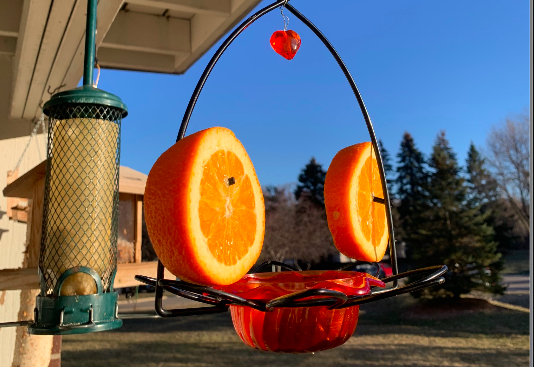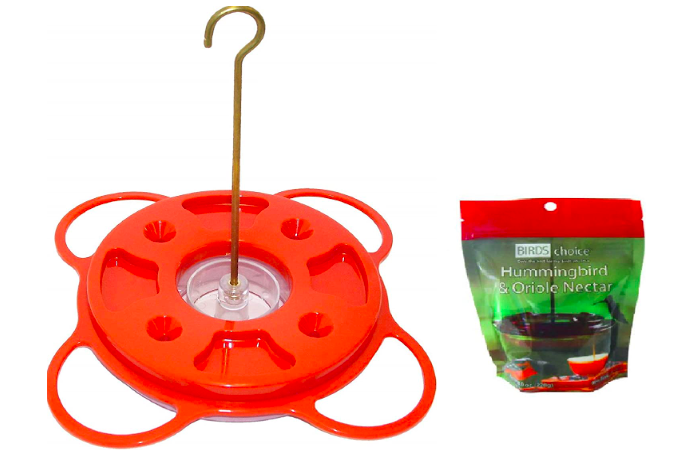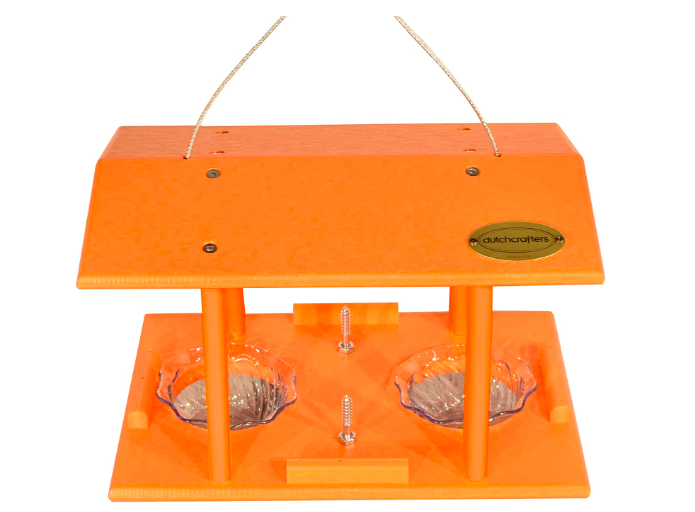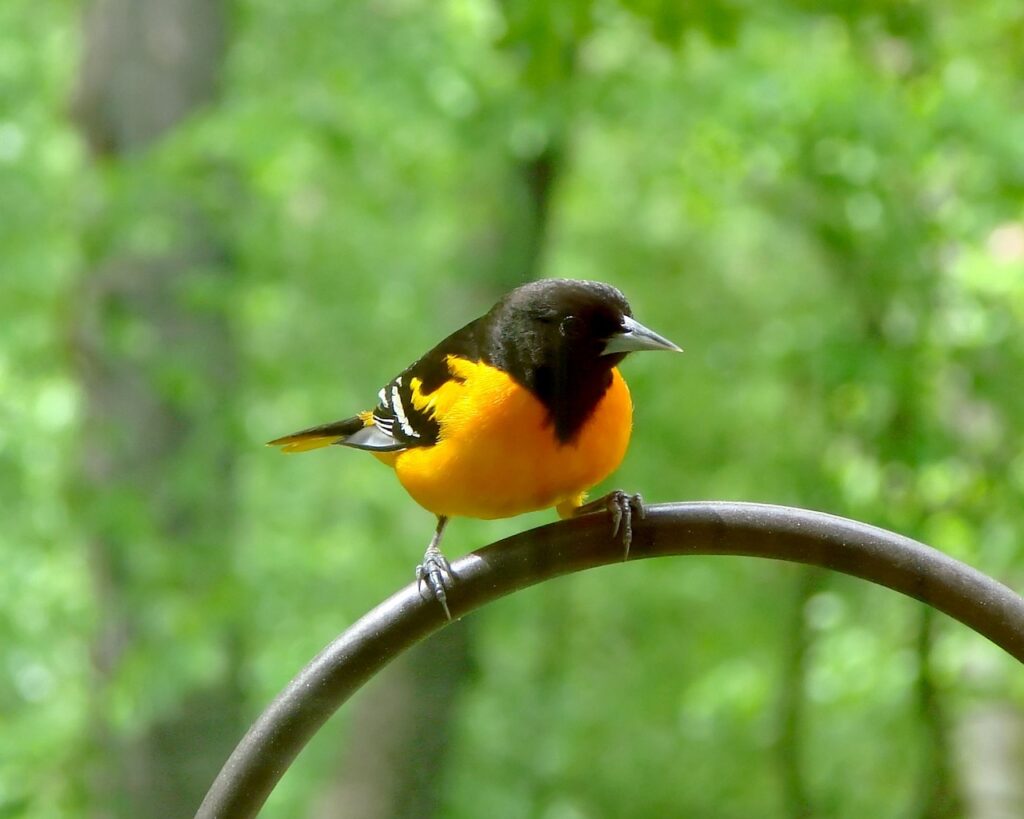With their mix of bright orange and black, Baltimore Orioles are stunning birds and a welcome sign of spring and summer at bird feeders in much of North America.
Outside of their striking color, it’s thrilling to attract a Baltimore Oriole to a feeder because they’re hard to see in everyday life. They tend to stick high up in trees and away from people.
Attracting a Baltimore Oriole to your bird feeders is rewarding. The best part? It’s not rocket science! You can bring them in with the right feeder and a quick run to the grocery store.
I started bird feeding in 2021 and have had Baltimore Orioles regularly visiting me in the spring by following the practices below. I hope they pay off for you too!
Related Content: The Best Amazon Baltimore Oriole Feeders: Top 9 Picks
Disclaimer: Some links found on this page are Amazon affiliate links. If you click an affiliate link and make a purchase, I might earn a commission. As an Amazon Associate I earn from qualifying purchases.
Step 1. Understand the Timing for Baltimore Orioles
Baltimore Orioles migrate from Central America in April and make it to the Northern United States by late-April to early-May. Their return back to Central America peaks in August and September. The Cornell Bird Lab has a good map of the Baltimore Oriole’s range here.
Your best chance to attract an Oriole is to have your feeder and their favorite foods out early to catch them during their spring migration. So, it’s good to get your feeder and foods out a week or two early.
In Minnesota, I put my Oriole feeder out in early-to-mid April. Orioles are looking for sugar and water after expending a lot of energy during their flight north for nesting season. If you catch an Oriole at your feeder at this time, they’ll probably keep coming back for several weeks and may even nest nearby. I’ve been lucky enough to experience this.
Step 2. Put Out The Best Baltimore Oriole Food Options

Unlike other backyard birds, Baltimore Orioles aren’t interested in bird seeds. You need to draw them in with sweet foods: Grape jelly, fruit (especially oranges) and nectar are all appealing options as its easily transitioned into fat for energy.
The food I have the most success with is offering a combination of oranges and grape jelly in an Oriole feeder. I find that Orioles almost always eat the grape jelly instead of the oranges, but I still put those out. Orioles are drawn to the color orange (scientists say they associate the color with food), making it a must-have at your feeders. I also find that my neighborhood House Finches enjoy eating the oranges, which is nice.
It doesn’t appear to matter what kind of grape jelly you buy for Orioles, as long as it isn’t jam. I buy Welch’s Natural Grape Jelly with the squeezable bottle. It has simple ingredients and no high-fructose corn syrup.
IMPORTANT: According to the Cornell Lab, it’s important to only offer small amounts of grape jelly at a time to avoid birds inadvertently getting it in their feathers. I never fill my jelly dish more than halfway.
Related Content: Ranking Bird Seeds from Worst to Best
You can also offer Baltimore Orioles the same sugar and water nectar mixture for hummingbirds. Mix one part sugar with four parts water and put it into a specialized feeder.
Later in the summer and early fall, Orioles become more attracted to mealworms, which tend to draw in a variety of birds, so I recommend putting some out during the summer and fall at your feeding station. You might just get a bonus round of Orioles swooping in.
Related Content: Kaytee Mealworms are Fantastic for Bird Feeding
Want to take a minimalist approach to attract Baltimore Orioles? Cut an orange in half and put it out on your deck railing or patio with a smear of jelly on top. This will do the trick for little effort or cost…but be prepared for ants, bugs, and squirrels.
Step 3. Buy a Baltimore Oriole Feeder
You don’t need to overcomplicate things with an Oriole feeder. You just need something that will serve up sliced oranges with grape jelly, or nectar.
The feeder I picked for Orioles is the Birds Choice model below. It has spokes on the side for orange halves and a center cup for grape jelly. I used it last year and it did the trick, drawing in both a male and female Oriole in the late spring and mid-summer. I was also pleasantly surprised to see my flock of House Finches use it. It turns out that they love grape jelly in the summer. Catbirds and Rose-Breasted Grosbeaks will also eat grape jelly. This feeder is also cheap and easy to clean.
Birds Choice Oriole Flower-Shaped Feeder w/Heart Ornament

Option two is a nectar feeder. A bonus with this approach is that it will also draw in hummingbirds. Another summer favorite! Here’s a feeder I’ll often put out below.
Naturesroom Oriole Feeder for Outdoors, Orange Jelly Feeder Kit

Another option that you can explore is an Oriole-focused platform feeder with a roof. This is helpful if it rains to shield the jelly you put out.
DutchCrafters Plastic Poly Double Oriole Bird Feeder

Step 4. Hang Your Feeder in an Ideal Location and Make Your Yard Friendly

I’ve noticed that Baltimore Orioles are similar to Northern Cardinals in a way, they’re skittish birds and will scout out your feeder before visiting.
Related: 5 Time-Tested Ways to Attract Cardinals to Your Bird Feeder
Baltimore Orioles breed in deciduous or mixed woodlands, generally in open spaces or on edges, according to the Audubon Field Guide. You’ll often see them near the tops of trees. You can increase your odds of having them visit if you place your feeder in a visible location that’s also near trees or brush. Find a balance so that your orange-colored feeder will draw them in while allowing them to be comfortable with places to hide nearby.
Planting native plants and flowers will also attract a wider variety of birds to your yard, especially Orioles in the spring and summer as they’re scouting locations to nest.

Wrapping Up
There you have it! By following these steps, you should draw in Baltimore Orioles to your yard.
Want to do even more to increase your chances of drawing in Baltimore Orioles? Follow these additional universal tips below to attract more birds to your yard!
- Provide water in a bird bath (especially with a stream or water bubbler)
- Clean your bird feeders often
- Avoid using pesticides
- Keep your cats indoors
If you found this article helpful, let me know in the comment section below.

Pingback:How to Bring Gregarious Blue Jays to Your Bird Feeder - BIRD BITES
Pingback:How to Attract Hummingbirds to a Feeder in Just Three Steps - BIRD BITES
Pingback:5 Time-Tested Ways to Attract Cardinals to Your Bird Feeder - BIRD BITES
Pingback:The 10 Highest Rated Amazon Baltimore Oriole Feeders - BIRD BITES
Pingback:The Ultimate Bird Seed and Bird Food Guide (With Photos) - BIRD BITES
Grape jelly! Who knew?! Great stuff as always, Dan!
Thanks a bunch Mike!!
Pingback:Product Review: The Best Baltimore Oriole Feeder You Can Buy - BIRD BITES
I had one last year who enjoyed peanut butter balls I bought for the bluebird’s and the sugar water along with oranges. I enjoyed watching soooo much.
That’s amazing! I’ll have to put some of those out sometime. Thanks for reading and dropping by, Bonnie!
Pingback:The Ultimate Guide to Bird Feeders (With Photos) - BIRD BITES
Pingback:7 Unique Foods You Can Feed Birds (Healthy and Safe) - BIRD BITES
Pingback:How to Attract Woodpeckers to a Feeder (With Photos) - BIRD BITES
Pingback:The Definitive Bird Feeder Bird Power Rankings - BIRD BITES
Pingback:10 Proven Tips for Bringing Orioles to Your Garden - Complete Gardening